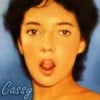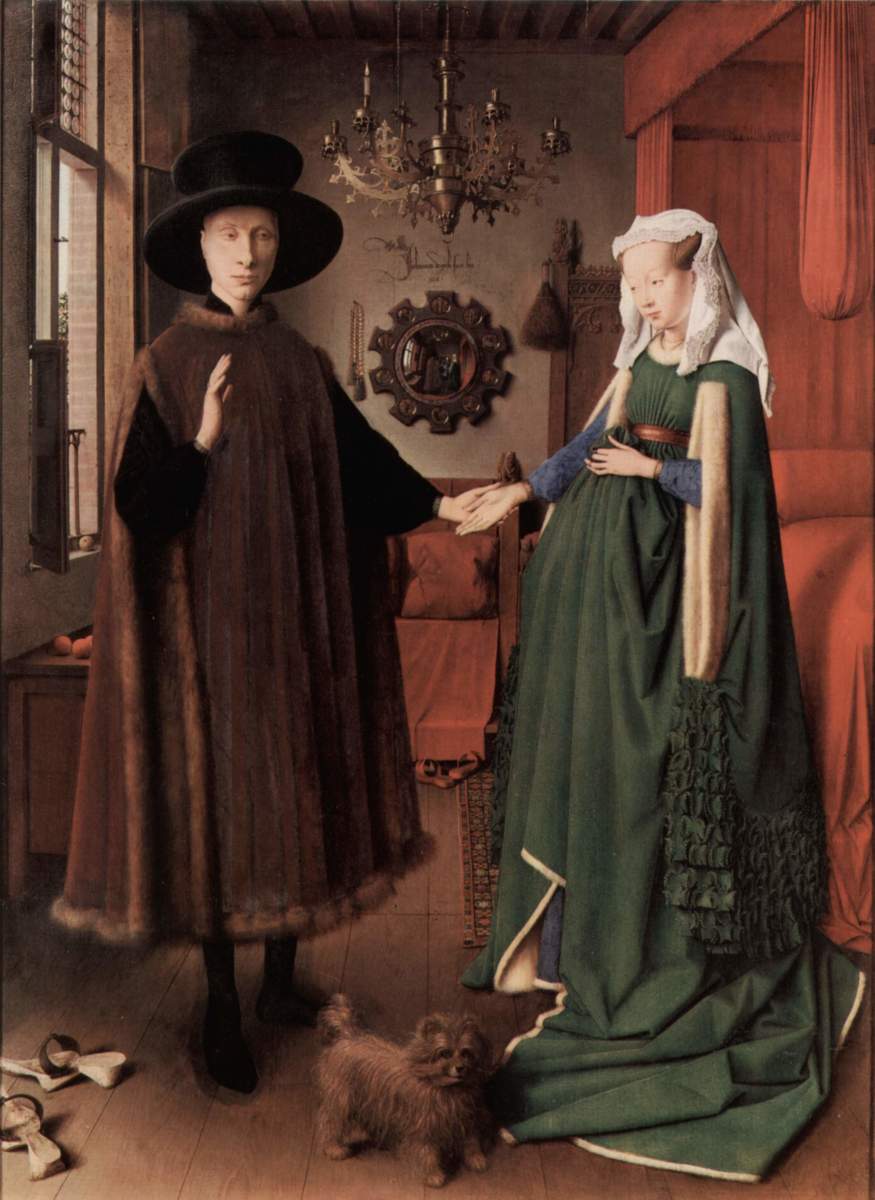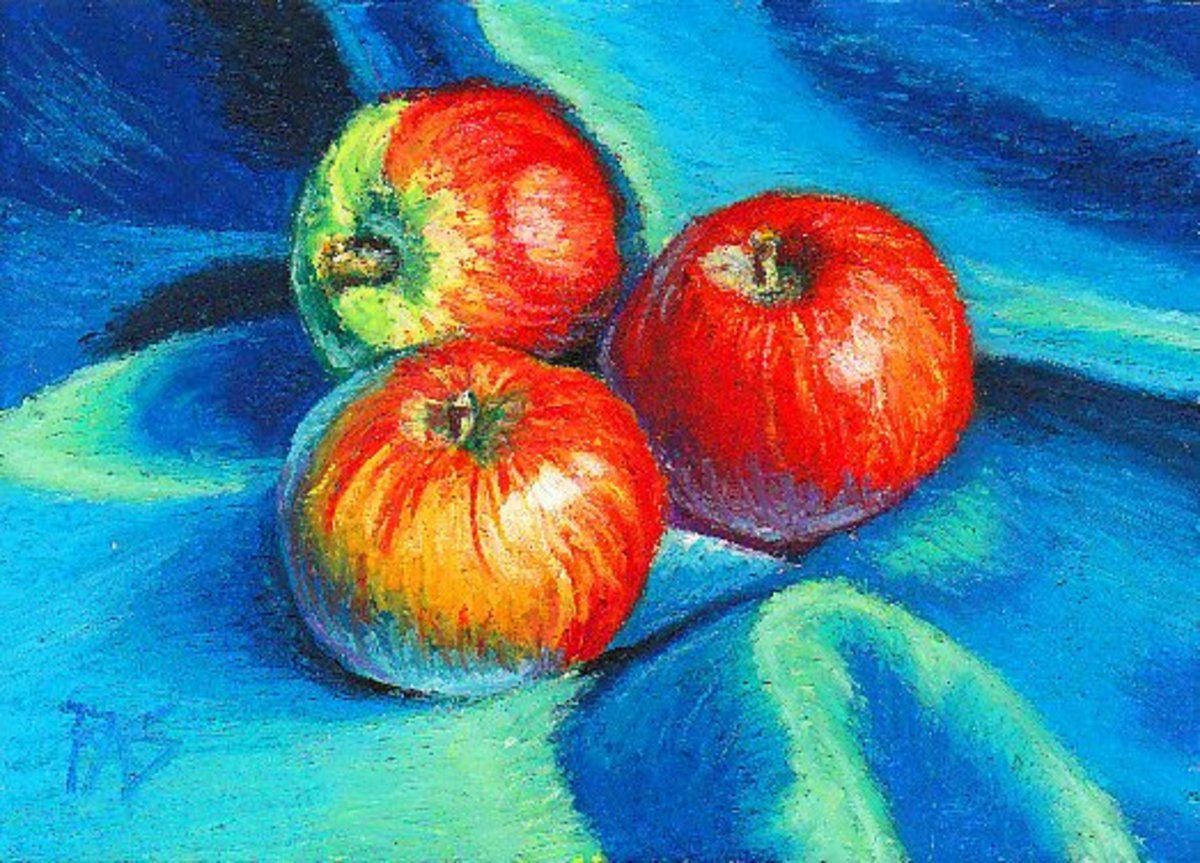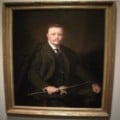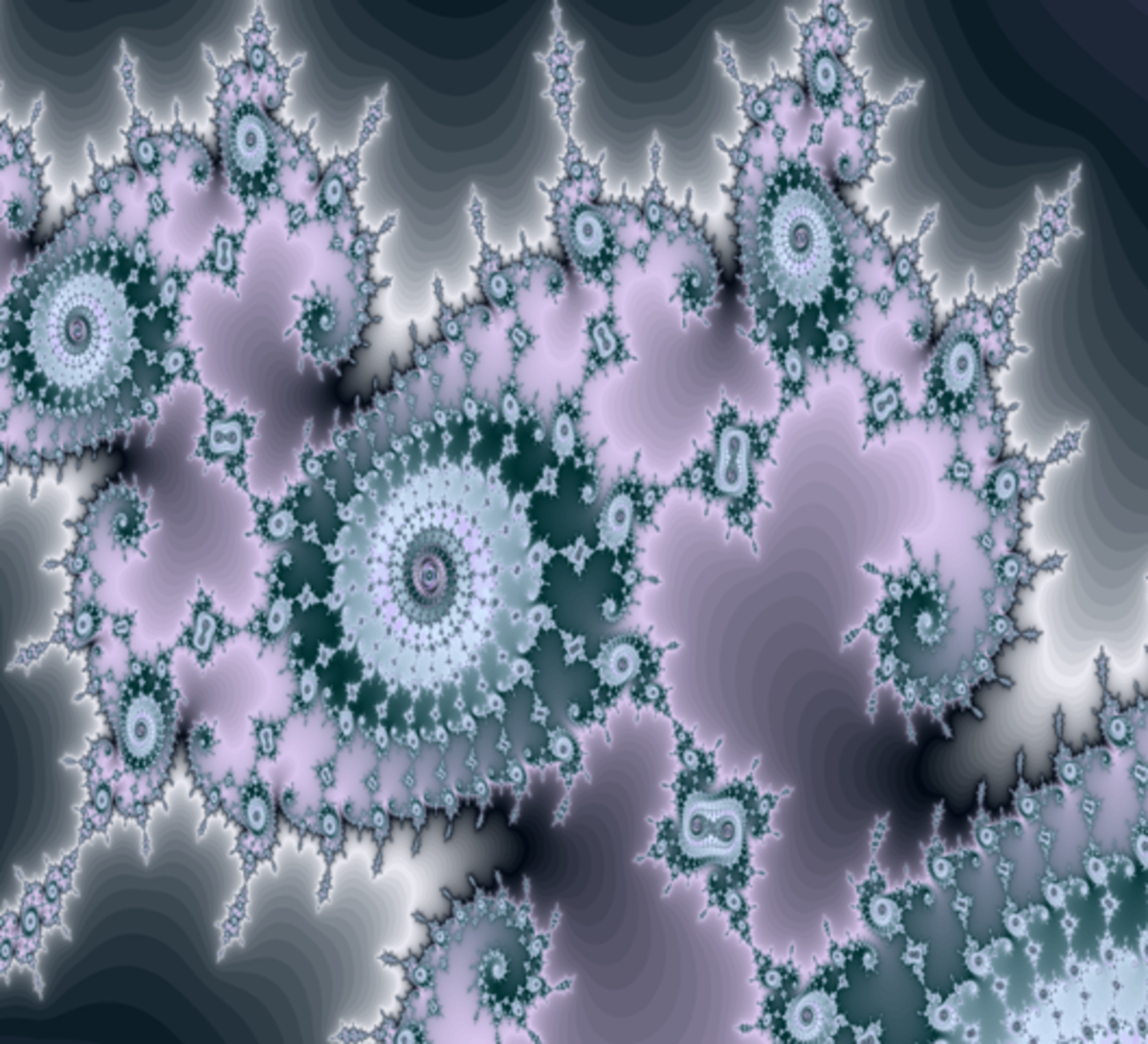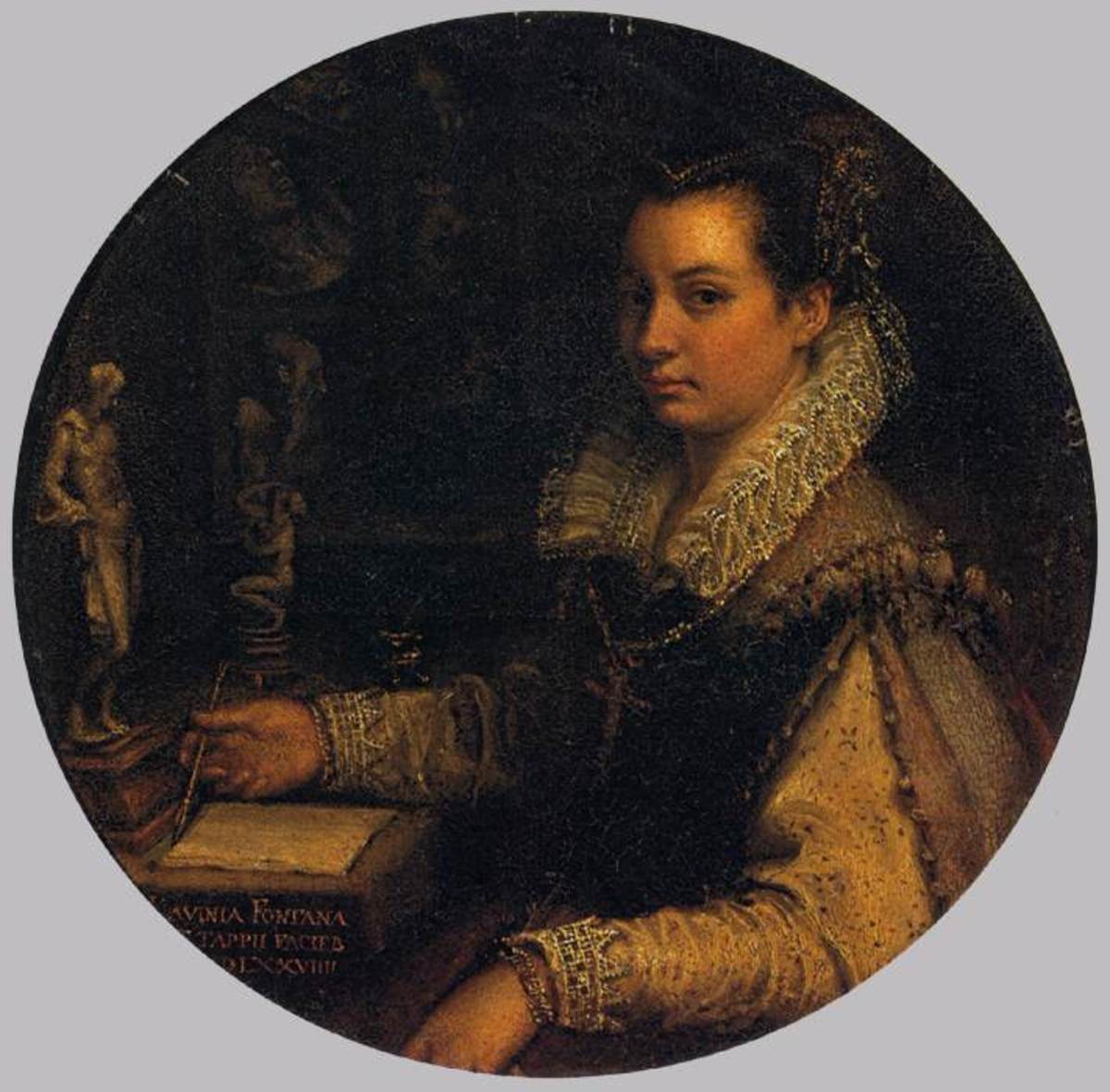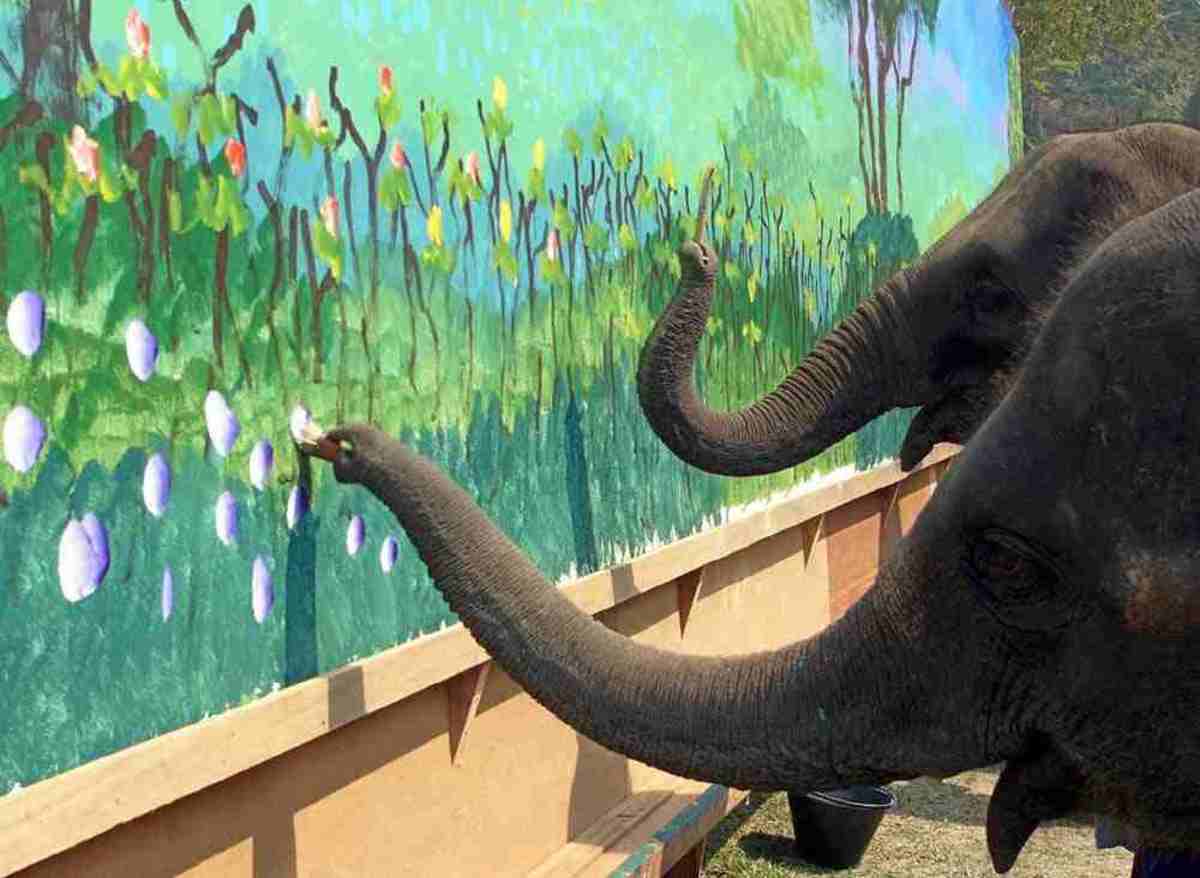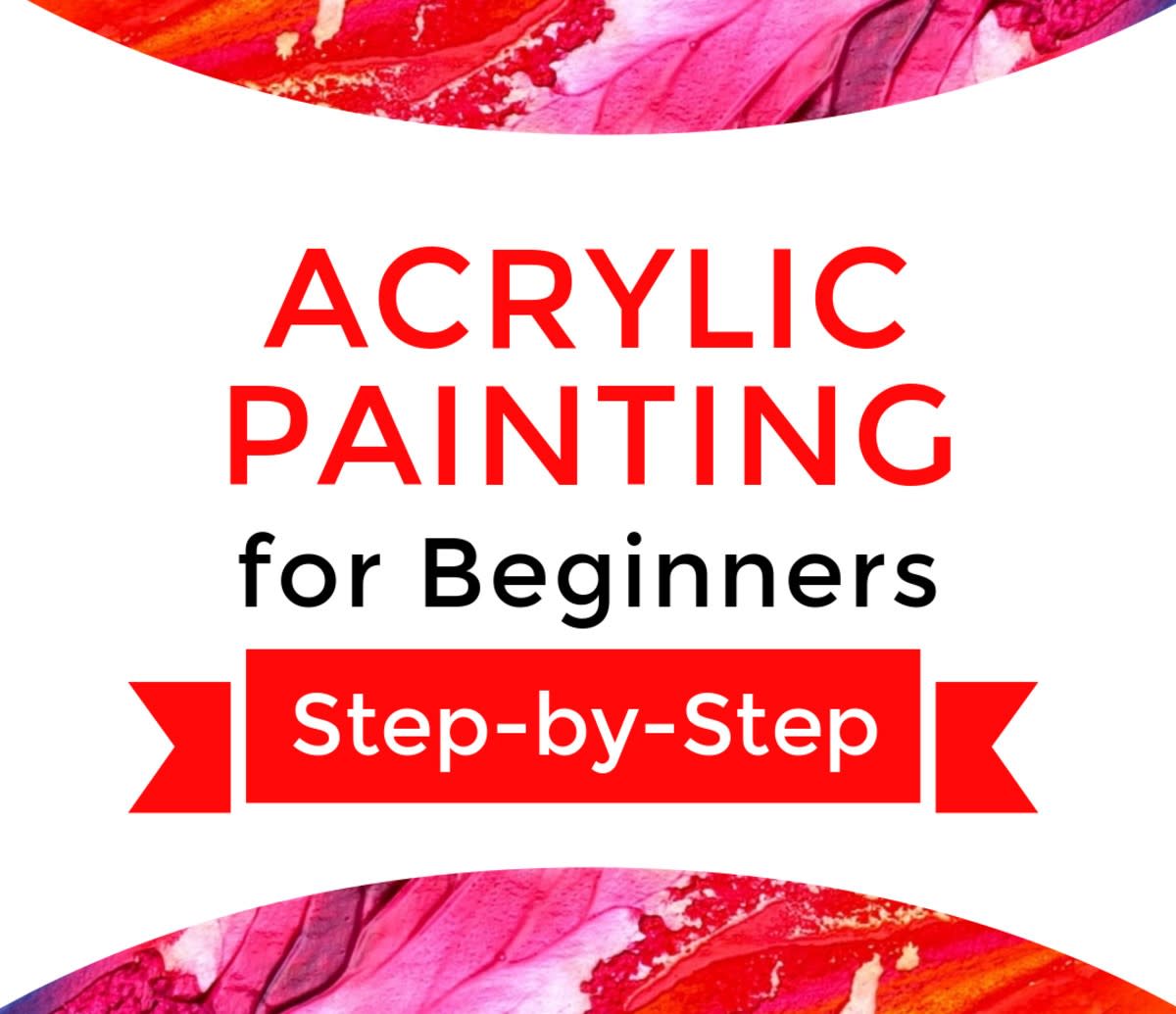Create Portraits Using Digital Art Software - Adobe Illustrator
Are you an artist or designer? Have you ever tried to paint or draw or sketch a portrait? Do you paint or draw or are you a budding artist? Or perhaps you are an Art Lover? Do you think it is hard to paint people? Or Landscapes? Or Still life? If you were to pick what you would like to draw or paint, what would it be? Flowers on an open windowsill in the evening sun? A baby smiling at his mother? A cat stretched out on a rooftop?
A portrait of an elderly but proud man resting in a chair with a paper and his dog resting on his lap? A family? For me, a little of everything, because I love art, but I can't paint. If I could - I would want to paint people portraits. And I'd love to be able to do life drawing. Living in London, I am virtually surrounded in my neighborhood by Art Galleries that have some truly beautiful art on show. I have wanted for some time now to do a hub on Art or an artist, or even a hub about a portrait that was being done by a particular artist. Today, after some planning and writing - and thanks to help from an actual Painter - I get all three wishes!
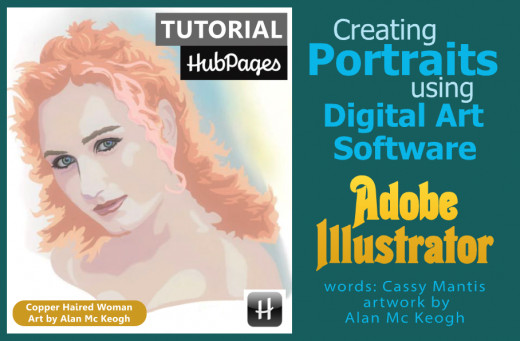
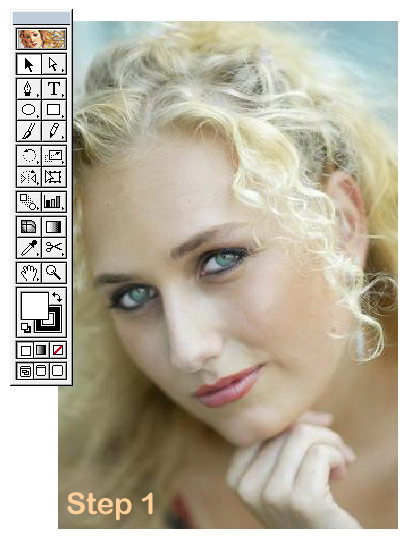
This is the first in a series of Hubs that are about Art and Painting. To help in the art of these Hubs, I have enlisted the assistance of an artist, who has supplied the amazing pictures and many of the notes here. He is an accomplished artist, and hails from Ireland. His main forte is portrait painting and contemporary painting, especially of people, and he likes to engage with his subjects as he sketches and draws them before the going on to paint them. He uses a lot of different art media, like watercolours, oils, pastels, pencils, ink, and for digital art, he uses Adobe Photoshop and Corel Painter and something called Adobe Illustrator, which we will deal with here. Digital artists use it for an almost infinite variety of art uses. My artist friend Alan (who's gallery site is listed at the end of this hub) explains:
"All artists tend to change something, Cassy. They make a mark and correct or replace something. Too many trees that spoil a scene or the proverbial telephone wire in a country scene that must be left out so as not to spoil a nice composition. I like many styles of art, and will use some abstract art ideas and modern art ideas to make an appealing artwork. For now, this is about a portrait of a woman. She is blond and blue eyed, but I have change some things along the way."
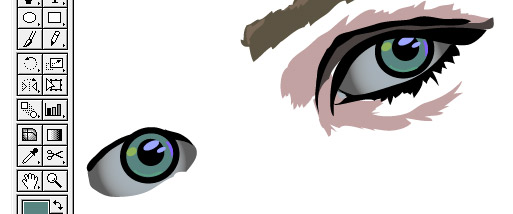
I was surprised. She seems such a lovely subject to draw. However, I trust Alan to be good to his word. He is good in all things art - especially portraits and art digital. His motto is to make the art more beautiful than the real thing. I think he has a real challenge here. But Alan has kept stills of how he developed the artwork.
Alan opens his photo of his subject (the lady) in Adobe Illustrator. He also previously did a slight adjustment in Photoshop, which altered the contrast of what he will paint. Alan - why did you do that?
"I just used a "Brightness / Contrast" effect in Photoshop, which makes dark things darker and bright things lighter. It makes her eyes more interesting."
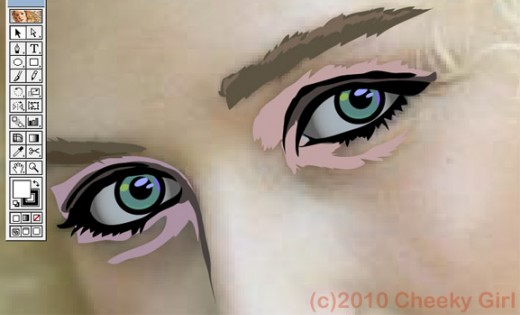
H'mm, facinating. This girl has such an interesting look in her eyes. I notice when looking at computers that Adobe Photoshop and Illustrator look almost identical on a computer. Is it easier to work that way? I ask Alan. Alan agrees.
"It improves the ability to switch from one art program to the other quickly. If you learn to use Adobe Illustrator, then learning Photoshop gets a lot easier, and vice versa." (He is using older versions of the software than the one's currently available. He likes the sense of using old things. Even in digital art. Aw!!) Over to you Alan.
"First of all, I am going to open her picture - it's a nice photo portrait I am starting with - and I will lock the layer, so I don't accidentally draw or smudge the original photo. Photoshop and Illustrator allow art to be locked and made safe. I am opening a layer ( a new art drawing or art creating space in the picture) on top of the photo where I will pain in the eyes first. (Imagine a transparent film or slide placed over an artwork and drawing or painting on top of it, that is what the layer is.) Since I am painting free brushstrokes over the photo, I want things to be clean and sharp. I use the brush tools and pencil tools in Illustrator to create the shape of her eyes and paint clean bold shapes over them. The left eye (our right) has black eyelashes and some dark details. I have created the orb of the eye front with a special art tool that makes perfect curves and circles, and I have made a graduated neat white solid behind it. Notice the shine in her eyes is identical in each one. I simply used the computer to duplicate them rather than repaint them."
The Painting so far looks kind of weird. There's no rough work, no sketches, although I did notice Alan worked out how many shades he would add to her skin. I know for a fact that rules of art say that you are supposed to sketch and draw before getting to painting, but with a computer and using Adobe Illustrator, we seem to have by-passed some steps already. And I am surprised at how this painting is starting to look already. Alan is a real artist and can do all these things. He studied at Art College for this! But seeing how digital art works is opening my eyes to possibilities here. I ask Alan did he have an overall idea about what the final painting will look like?
"There will be at least three shades of skin lightness, they'll be apparent in the work as we near the end. I will change the colour of her skin to a cooler colour for artistic reasons. I will make her face slightly delicate. I want her eyes to really stand out, and have some emotion there. So that's why I am putting in so much detail." He's not kidding. Alan is painting more detail into her eyes than I can see in the original photo. Artists often work from photos. Alan does very fast sketches too and can do incredible work with just a pencil and paper. His gallery has samples of his art. (See further down for his gallery link.) I sense this art lesson will be followed by more. For now, the painting is starting to finally take shape.
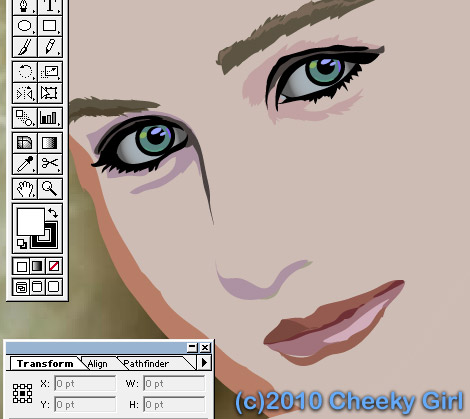
I keep looking back at the original Picture of the lady in the photo. Her skin has changed, her eyes seem to have developed more "life" somehow, and there is a real sense of change happening here. Many artists, according to Alan, will start a portrait with an overall sketch of the figure and will try to "block" in the shapes, and get proportions correct. But with this digital art, a different approach is used, digital art needs a certain kind of approach.

"Okay, the two eyes are done, and I'm showing the face behind the eyes so you can see them as a comparison. I have to constantly look at the original woman to see how I am progressing. I'm now going to add the lips. I'll only use 5 colours for them."
I watch Alan as he deftly now on a new layer, paints over the woman's lips. How can he possibly just use 5 colours. I can see ten, no 15, no - more. How can he do it in 5 only? Alan does this by looking at her lips as "clumps" or "blocks of colour" and he can see one colour where several lie, yet he can somehow decide what proportion to have them. Sure enough, I think there are only five colours in the lips. The whole thing looks like a tracing really. But I have seen Alan's work long enough to know this is real painting alright. Digitally painting a woman's face from her photo takes skill. I envy anyone who can do this.
Alan is using the computer to take snapshots of each stage of the work, and they will be in this hub to show his progress. Alan explains why he uses so few colours on her face as he now adds her first facial skin tone. He doesn't want too many colours in the painting, and is deliberately controlling the colours so there isn't too many in the final finished artwork. Wow, suddenly her whole face has come into view and I am shocked at how "contrasty" and detailed it is. There's real light in her eyes, and I am struck by how she looks. Her eyes, suggestion of her nose, and mouth are very neat and basic. I'm surprised at how tidy everything looks. There is a definite elegance in the simplicity of it all. I am now suddenly realising how this artist's mind thinks. Alan thinks ahead, and is thinking of her in a certain way, and slowly working more details like shade to her skin. Even though this is a portrait, Alan is drawing on his skills of fine art to work to a plan.
I should just explain that this amazing software Adobe Illustrator is unusual. It's used in the Design Industry by Designers, as well as more traditional artists. And yet, I wonder what are "traditional artists" doing with clever software like this? Well, it's apparently called a vector graphics editing software package, good for amazing detailed line-work. Whereas, Photoshop is a Bitmap Graphics Editing package. It's more useful with photowork and special effects with Type and Pictures. So now we know.
Back to our portrait, and things are coming along. By using the original Photo as the reference picture, Alan has now used Adobe Illustrator to create these detailed shapes and lines in freehand over the picture, and has remarkable control over the colours, and even the thickness of the lines.
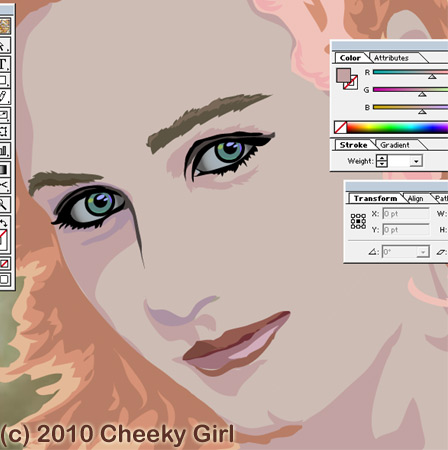
Now comes the hair. The surprise is obvious, and there is no blond hair anymore.
"No, I am going for more of a kind of copper colored woman look," says Alan. He chooses the copper color as it is a reddish-brown colour. Apparently Alan is working to a definite plan or idea. All artists have some idea of what they want to create.
"I am cooling down some of the warmth of the original face and hair and going for a more controlled warm, a cooler warm if you like. I want to draw attention to her eyes."
I watch with fascination as Alan uses a new layer to add 2 new aspects to the art. First a shadow in her face that is under her chin, its a pale delicate pink skin colour that is plainly not a colour of the original photo, and then he works in freehand a bunch of winding squiggles around her head in 3 shades of copper-like hue. I immediately notice the colours of her face having an effect but how did he do it?
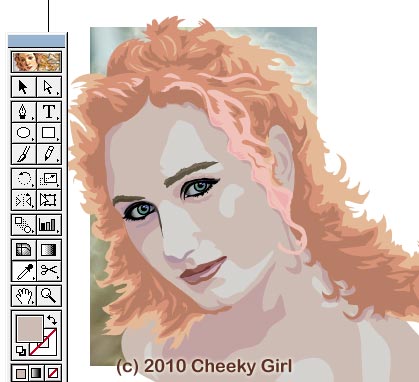
"Simple. I chose three shades for her hair. Ha, yes, just three. Why three - okay because I don't want too many colours in this. Too many colours end up competing with each other. The fewer the better. The link that helps in the painting is the dark shade under her right eye (our left) which also extends up the edge of her forehead. This dark pink seems to have bits if her main skin colour and seems to "relate" in a colour way to the hues in her hair. I can use sliders in the colour control of Adobe Illustrator to control the colours even more and balance them..."
The screen shots are small and may not do justice to the overal picture Alan is slowly developing, but I am amazed at how the woman has been transformed from a blond to a copper-haired maiden. I now understand him using so few colours. He is in full control of the colours in the painting. And yes, he has changed quite a few things about her, yet she looks stunning! I am seeing art happen before my eyes. Oh to be an artist!
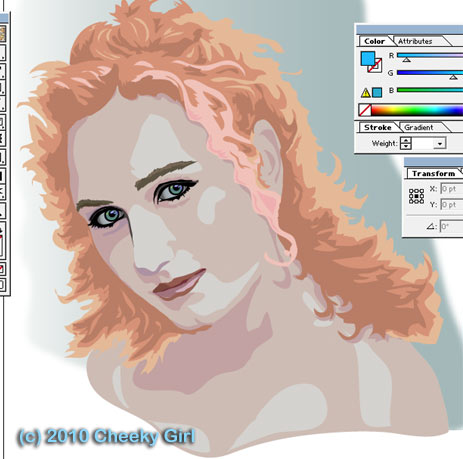
The woman is wearing a black and red top in the photo, but Alan has omitted this and is going to make her look more like an abstract art, more surreal somehow. Her hand is not going to be in the final painting, even though it's there in the photo resting under her chin. Again, Alan has his reasons. He wants to just show the face. As I stand here looking at her face I suddenly find her face reminding me of a famous female singer. Can you think of who I am talking about? Her face is delicate and beautiful. Her eyes are amazing. Almost hypnotising me.
"Okay, I am now adding the bottom part. The finished painting will look almost like a bust of a woman, rather than a painting. So no hand appears in it. I will delete the original woman from the work, and add a pale blue background to make the pale copper colours come out more. And I am going to use a Photoshop filter (Alan calls it Optik Verve) to warm up the colours a bit and also soften the overall art." Alan adds that in real painting, its a lot harder to do that, but with computers and neato software like this, he seems to be able to anything, really.
Alan has now finished the painting of the copper-haired woman. I wasn't sure I would like her being changed but I have changed my mind. Alan saves the art and then reopens it in Adobe Photoshop, and using "Optik Verve", a filter for doing special effects with hues and colours for art and photos in Photoshop (both old and new). He is able to preview what she looks like before he commits to the filter he wants, altering settings till he is happy with his woman! Alan now uses Optik Verve to soften and warm the hues in the picture and I am speechless. Now she looks like a Princess. A Goddess. I am struck by her appearance, and compare this finished painting to the original photo. He wasn't kidding. It is a digital painting, but a contemporary painting style. Alan is right. He has taken a beautiful woman and made her more beautiful, and changed some features along the way. His painting techniques are facinating. It started out looking abstract and weird but just look at the finished result. I see now why portraits are his thing.
So here she is, for your pleasure! I give you "copper haired woman" byartist Alan Mc Keogh. He has kindly allowed me copyright control of the screen pictures for illustration here. He owns the original copyright, - so don't nick his work. I hope you enjoy this painting tutorial. I will be returning to painting in future hubs. And please check out Alan's Gallery and portraits. I am looking forward to getting people's comments here, on this Art-related Hub. "'Tis an Art..."


A note about "Optik Verve". This is a free software filter that can be downloaded from the internet and is free and added to any current version of Adobe Photoshop. (It works also in Photoshop 6.) When loaded onto a PC, you just put it in the filter plug--ins in Photoshop and it works. It's great for manipulating photos and art work. It is ideal for all you creative folks out there. Artists love it!
Text of Hub copyright (c) 2010 / 2016 Cassy Mantis. All photos and artwork copyright (c) 2009 to 2016 Alan Mc Keogh. Used on Cheeky Girl's hub with permission. All Rights Reserved.
Join HUB PAGES here. It's free!
